2024-25 Non-Conference Schedule Finalized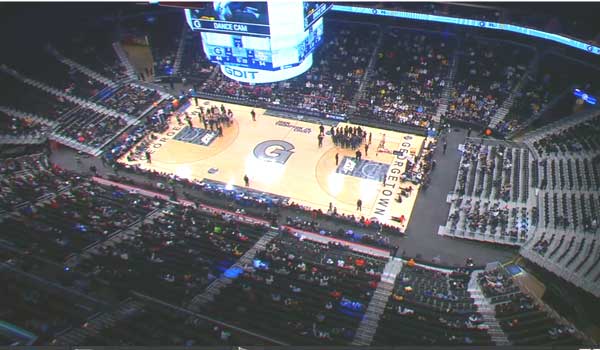 Two home games at McDonough Gymnasium and three new opponents round out what could be a weak non-conference schedule, as posted from the basketball office earlier today.
Home Games At |
UConn Seeks Big 12 Invite; Support Not Certain
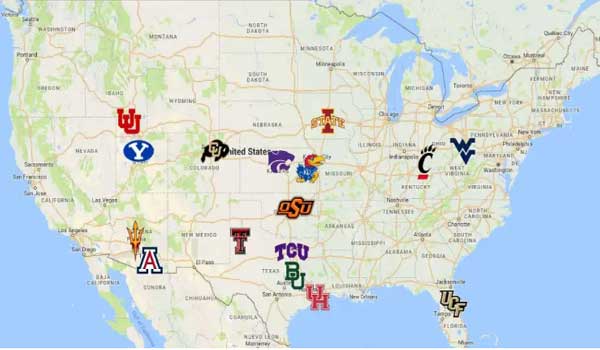
At the onset of the college football season, news leaked Friday that officials from the University of Connecticut met with the Big 12 Conference last week to pursue an all-sports invitation. As was the case in two prior attempts, it's no sure thing.
SELECTED COVERAGE
First, the article. Ross Dellinger at Yahoo Sports reported that "In a marriage that could bring together arguably the country's strongest basketball conference and perhaps the nation's best hoops program, UConn officials visited with Big 12 athletic administrators in Dallas last week.""In the latest version of the deal, UConn would join the conference as a member in all sports except football starting, at latest, in 2026. Contingent upon the school meeting certain investment thresholds in the sport, UConn football would join the Big 12 in 2031."
College football Twitter all but had the Huskies on the road when Pete Thamel at ESPN.com tapped the brakes.
"No vote has occurred for a potential Huskies membership, nor is one close to happening, as sources cautioned that there has been pushback among several members that would need to be overcome," he wrote. "While some schools are in favor of adding the Huskies, multiple athletic directors within the Big 12 have been outspoken against it, sources told ESPN. Several others are undecided."
Why?
"Some of the pushback is due to the timing of the discussions, as league officials are busy dealing with the House v. NCAA settlement. There are also questions about how much the move would benefit the conference in football," Thamel said.
Big 12 Athletic Budgets
(2023, in millions)
Arizona: $201.2
Ariz St.: $149.1
Colorado: $171.3
TCU: $149.2
BYU: $141.7
Kansas: $139.7
Utah: $137.4
UCF: $118.2
Okla St.: $118.2
Texas Tech: $113.1
Houston: $104.8
West Va.: $103.1
K-State: $96.9
Iowa St.: $92.9
--------------
UConn: $83.1
Ariz St.: $149.1
Colorado: $171.3
TCU: $149.2
BYU: $141.7
Kansas: $139.7
Utah: $137.4
UCF: $118.2
Okla St.: $118.2
Texas Tech: $113.1
Houston: $104.8
West Va.: $103.1
K-State: $96.9
Iowa St.: $92.9
--------------
UConn: $83.1
Connecticut made a proposal to the Big 12 in 2016 and 2019, when that conference was seeking expansion bids. In documents, it cited New York as a "a home away from home" for its teams, including football, but its distance and poor performance in the American Athletic Conference found it few takers.
UConn, Memphis, SMU, and Tulane were in discussions for the Big 12's 2021 expansion which ultimately chose BYU, Cincinnati, UCF, and Houston instead, and was not a finalist when the conference added Arizona, Arizona State, Colorado, and Utah to increase from 12 to 16 schools in 2023. Back to back national championships in men's basketball at Connecticut has rekindled Yormark's interest in an eastern wing of the Big 12 to battle the ACC at the next round of realignment musical chairs.
Geography has nothing to do with this, of course. The average distance between Storrs and the other Big 12 schools is 1,691 miles, with just two fewer than 1,000 miles and four of whom are 2,200 miles or more away. The average distance between UConn and its other Big East schools is 589 miles, with four of the ten (Providence, Seton Hall, St. John's, and Villanova within three hours of the Connecticut state line. The UConn fan base that could comfortably take the New Haven Line to midtown Manhattan or I-95 to Washington will not be traveling to the likes of Lubbock, Provo, or Tempe.
Money has everything to do with driving this. For Connecticut, the lure of up to $40 million in potential TV rights annually (versus $7-8 million per year in the new Big East contract) would be enough to cast aside its Northeastern roots; however, its experience in the American Athletic Conference should be, at the least, a cautionary reminder that fan support ebbed when playing opponents outside the East. In 2018-19, its last season in the AAC, UConn averaged 18,073 per game in football and 8,652 in men's basketball. Its present football budget of $18 million would be the smallest in the Big 12 and its football stadium, Rentschler Field, the smallest by capacity.
Evidence also points to a secondary motive with this dalliance. A major college home could position UConn as a suitor if the ACC goes the way of the Pac-12, whereupon it could someday reunite with the likes of former Big East members Boston College, Pittsburgh, and Syracuse. UConn football, which currently plays as one of two FBS independents, is not seen as a long term solution.
However, ESPN and others have noted that UConn football would not be fully admitted until as late as 2031, suggesting media rights could be limited from the $40 million figure provided to other Big 12 schools.
As part of the NCAA's plan to address revenue sports, schools in the four major conferences opted into a revenue sharing plan which could allow as much as $22 million per school to be distributed to student athletes. At present, UConn is not subject to this but would have to find funds to accommodate it.
"Where is the money coming from to enhance the program?" asks Mike DeMauro of The Day. "Now it is prepared to spend like other Big 12 programs do? How? We're supposed to believe that during the next seven years of independent football, they'll find the money to commit to the layered upgrades necessary to appease Big 12 officials?"
In January, CT Insider reported that UConn athletics posted a $35.8 million deficit that was covered by institutional support, of which $14 million was from football. The school is expecting an overall deficit of $70 million in the 2024-25 academic year.
"In the world of expansion and realignment," added DeMauro, "basketball doesn't count."

Like a coworker with a wandering eye, UConn's dalliances with other conferences come as no surprise around the collective Big East water cooler, but it comes at an awkward time of sorts.
Some thoughts:- The Good Times: The last decade has been a period of substantial achievement in a conference left for dead by ESPN. Four national championships in 11 seasons dwarf other conferences with significantly more resources: in the same period, the ACC has three champions, the Big 12 two, the SEC and Big 10, none. With two exceptions, Georgetown among them, every other Big East school has stepped up to compete on the national stage.
UConn's success is in no small part its ability to thrive in the Big East, and vice versa. Losing UConn at is peak would be seen as a sign of weakness for the conference, but a realization that major college football programs aren't the Big East model. Past may also be prologue: the football schools that have left for larger conferences have, on the whole, underperformed. Syracuse, for example, is 2-10 in the ACC conference tournament since 2013 and has missed the NCAA tournament in three consecutive seasons. UConn is UConn, but could also become the next Boston College. - Expand? In contrast to UConn, the 10 programs of the conference walk together and a 10 team alignment was in place from 1990 through 1995 and 2013 through 2020. In contrast to commissioner Val Ackerman's public interest in considering expansion, the presidents have steered clear of it, particularly Gonzaga, whose distance introduces significant travel expenditures and who may not be a good fit across other Big East sports. Adding a Atlantic 10 school (Dayton, George Mason, Virginia Commonwealth, Rhode Island) doesn't do much for the Big East's bottom line at tournament time. In a very uncertain period for college athletics, expansion for expansion's sake is a risk.
- Media Rights: The stature of UConn was a factor in the successful conclusion of the Big East media rights deal with Fox, TNT, and Peacock. Losing a basketball flagship (including a UConn women's team which drove a significant commitment to women's basketball in the contract) puts some stress on the contact before it even begins in the 2025-26 season. Whether a change would reduce rights fees or put added pressure on presidents to find a replacement (or replacements) is not known.
- Is There Another UConn?: Would another FBS program follow the UConn model, park football elsewhere, and seek the Big East? Perhaps, but these same schools are investing in football for the same reason Connecticut is: to hope for a seat at the table. (Hint: Most will never see it.)
The University of Memphis, a perennial finalist in expansion plans, is now spending $240 million to renovate the Liberty Bowl to be considered more competitive; obviously playing as an football independent just to play Big East basketball isn't a good use of that investment. Schools like Temple and Massachusetts fit the regional footprint but have faded considerably in basketball in recent years: Temple has one NCAA invitation since 2016; UMass, one bid since 1998.
- And What About Georgetown? Would a conference like the Big 12 come looking at the Hoyas? Highly unlikely. Georgetown is a unicorn--its disparate combination of sports, from high budget basketball to low budget football, coupled with a lack of a regional fan base would not make it past a tab on Brett Yormark's spreadsheet. Realistically, Georgetown isn't much of a draw to the Big 12, and institutionally doesn't seek to be one as did TCU, a school which used football to elevate its reputation nationwide and which spends more on that one team than Georgetown spends on its 30 teams combined.
Georgetown doesn't need to associate with Utah, Central Florida, and Kansas State to say that they're a "big time" school, and everyone knows this.
- Can the Big East thrive? Absolutely. Villanova, Marquette and Creighton are national brands. St. John's has arisen from two decades of slumber, and a middle tier of Xavier, Providence, and Seton Hall can compete on any level. Unfortunately, the Big East program expected to lead the way in 2013 has done anything but, and Georgetown is now more of a legacy brand than a national one.
- And what if the Big 12 says no to UConn again? Well, it's back to business, but keep all this in mind if the ACC loses some schools in the feeding frenzy that has become college football realignment.
Hoyas Add Forward, Will Redshirt In 2024-25

In local parlance, it's called the "Friday evening news dump": major stories aren't released entering the weekend. However, the addition of a 10th scholarship newcomer is not insignificant.
ADDITIONAL COVERAGE
Completing its largest inbound recruiting class since 1949, junior forward Jayden Fort announced Friday he will forego his senior season at Washington's Jackson-Reed HS (the former Wilson HS) to enroll at Georgetown this fall. However, he plans to redshirt, becoming the first non-medical redshirt Georgetown has accepted in men's basketball."I'm going to redshirt this year and that's big time to me," Fort told MadeHoops.com. "I just don't think there's any better development for me than to be on a college campus. They showed me the players that they've had in the past at my position and almost every one of them went on to be all-conference dudes and pros. They see me developing exactly like those players. That proved to me that Coach Cooley knows what he's doing, especially at my position."
Fort arrives to the Hilltop with modest numbers. Ranked #251st as a three star junior, Ford averaged 11.6 points and 6.5 rebounds as a 6-8, 185 pound power forward. With interest from George Washington, George Mason, Boston College, Rhode Island and East Carolina, he becomes the nominative first recruit of the 2025-26 season.
"I didn't really see myself staying home when I got into the recruiting process, but it's never been something that I was against," Fort said. "Being able to be home and have my family only 20 minutes away to see my games and something like only being 15 minutes away from Jackson-Reed to go see games up there is a blessing. That helped in making my decision. Being able to play at this level and be right by home is great."
The tentative depth chart ending the summer looks something like this, with freshman in blue and incoming transfers in gold:
| Guards | Forwards | Center | |
| Starters | Jayden Epps (Jr) | Micah Peavy (Grad) | Drew Fielder (Soph) |
| Malik Mack (Soph) | Drew McKenna (Soph) | ||
| In Rotation | Kayvaun Mulready (Fr) | Curtis Williams (Soph) | Thomas Sorber (Fr) |
| Caleb Williams (Fr) | Jordan Burks (Soph) | Julius Halaifonua (Fr) | |
| Bench | Seal Diouf (Fr) | ||
| Walk-Ons | Austin Montgomery (Soph) | ||
| Hashem Asadallah (Soph) | |||
| Mason Moses (Fr) | |||
| Michael Van Raaphorst (Fr) |
Schedule Update
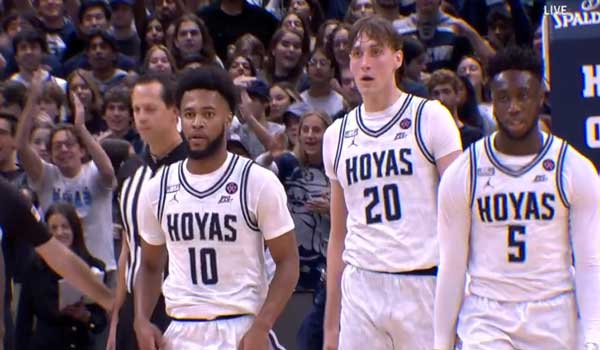
Lehigh University makes its first appearance on a Georgetown regular season schedule in 60 years later this year, per a Twitter post from reporter Rocco Miller.
The Engineers return four starters and ten lettermen from last season's 14-18 team, which finished 267th in the NCAA NET rankings. A date has not been confirmed, according to Miller.The schools last met in the regular season at McDonough Gymnasium on Dec. 30, 1964 in a Georgetown-sponsored multi-team event, won by the Hoyas 70-63. Two decades later, Georgetown defeated Lehigh 68-43 in the first round of the 1985 NCAA tournament.
Big East & UConn: "Great Partners"

The confluence of consecutive national championships at Connecticut and a new TV contract does not go unnoticed by Big East commissioner Val Ackerman, as per an article from CT Insider.
"A win-win," Ackerman said in the story.That's not to say Ackerman doesn't acknowledge the elephant in the room-- UConn is the only Big East school which may be a viable expansion candidate by the Big 12 or ACC in the future, each of whom could offer much more money in media rights even under the conference's new deal.
"Our sense is, for any of our schools, if they feel like a better opportunity comes along, they follow the [exit] rules, they can move on," she said. "Our sense is we've got a pretty good value proposition here, given the identity, the history, the brand value, the television, and certainly for basketball, enough money to be competitive."
"We've done well for ourselves without football. Basketball is just a lower cost proposition."
In other UConn news, the school announced a multi-million dollar partnership with Madison Reed, a women's hair care company founded by a UConn alumna, Amy Errett. "As part of the deal, Madison Reed will sponsor UConn's Gampel Pavilion and XL Center with court-naming rights for the next three years," writes CNBC.com.
"The company has also signed NIL deals with four UConn women's basketball players: Paige Bueckers, Azzi Fudd, Ice Brady and Morgan Cheli. As part of their arrangement, the players will act as brand ambassadors and have agreed to wear Madison Reed color in their hair throughout the span of the deal."
Hoyas Add Center for 2024-25
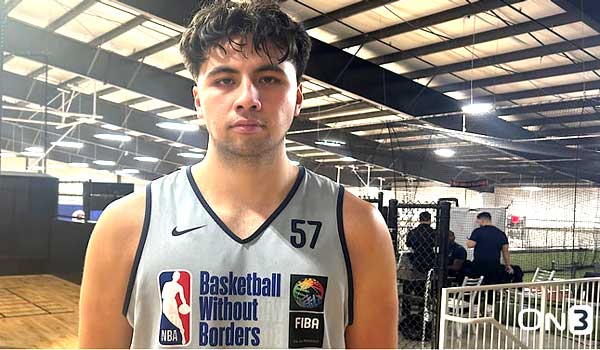
With three weeks before the start of the classes for the 2024-25 academic year, the Georgetown Hoyas have added a sixth freshman to the roster.
ADDITIONAL COVERAGE
Once again, Joe Tipton at On3 Sports was first with the news of the signing of Julius Halaifonua, a 7-0, 290 pound center from Auckland, New Zealand by way of NBA Global Academy in Canberra, Australia. Halaifonua was ranked #33 among players for the high school class of 2025 but opted to reclassify to 2024, where is he ranked 60th in that cohort.
In his most recent effort on the court, he averaged 16 points and six rebounds as NBA Global Academy won a six team tournament last month among other NBA academies worldwide. Though he has not played in the United States, his size and skills attracted a number of interested schools, among them North Carolina, Kentucky, Xavier and Virginia, most seeing Halaifonua as a 2025 prospect.
"I had a great visit to campus and was able to see firsthand all of the resources in place at Georgetown for a successful program...I'm excited and look forward to getting on campus officially." -- Julius Halaifonua
"Over the course of the last year I've developed a great connection with Coach Cooley and [assistant coach Brian] Blaney," Halaifonua told 247 Sports. "I believe in what is being built at Georgetown and believe there is an opportunity to contribute to the program's success in my first year."
Unlike many Division I schools, Georgetown has not been active internationally in the past but the signing is a major step forward in that direction. Halaifonua is Georgetown's first Australian signee since the little known story of 5-10 guard Luke Martin in 2000. Martin, a native of Australia who played one season at St. John's HS in the District before signing with the Hoyas in May 2000, left Georgetown before the start of the fall term and enrolled at Texas-El Paso, playing one season before embarking on a 13 year career in the Australian pro leagues.
For Sale: Howard University Basketball
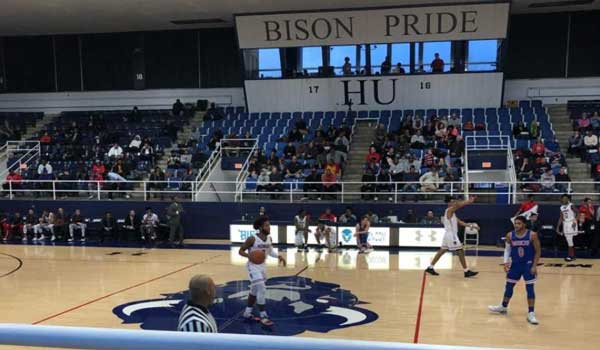
It's a program that averages 1,439 a game with a budget of just $1.4 million. Since joining Division I in 1970, it has not won a single post-season tournament game. But if you're looking to invest in a college basketball program, Howard University coach Kenny Blakeney would like to talk to you.
Saturday's Washington Post reports that Blakeney has approached private equity investors to invest $100 million for a one-third share in the program, with an eye towards success it has never seen before. Included in the pitch: an attempt to join the Big East conference."His business plan is long and layered," writes the Post. "The main thrust, though, is that Blakeney needs that initial $100 million to upgrade Howard's arena and roster. From there, he would want Howard to go independent, allowing it to find its own television deal (think Notre Dame) or join a bigger conference as an affiliate school (think the Big East, which Blakeney mentions throughout his written proposal)."
Such wild numbers do not come within a vacuum. Private equity has been discussed as a means for Clemson and Florida State to exit its obligations to the Atlantic Coast Conference, while the university, which has been dissatisfied with the MEAC, sees its television contract expiring in 2025-26. Still, the concept that the men's basketball program is worth 22 percent of the entire assets of the university is a speculative one at best.
"How do you actually give [private equity] a return? I think the main way is going to be through media revenue, which then requires you to have access to one of the major media deals," said attorney Rick Volante. According to the conference's IRS Form 990, Howard received just $202,491 in distributions from the MEAC in 2023 compared to nearly $59 million paid to the University of Maryland by the Big Ten Conference.
For the same period, Georgetown University received $4,964,083 from the Big East conference.
According to the Post article, Blakeney proposes $50 million to renovate 2,700 seat Burr Gymnasium, develop a $5 million annual NIL budget which would be among the largest in the nation for a men's team, and offer players the promise of revenue sharing should that come to pass. He also suggested naming rights to the gymnasium, built in 1963.
Added writer Jesse Dougherty: "What does the school think of this? Well, Blakeney is holding off on deeper discussions with Howard officials until he has investors on the line. And is this within NCAA rules? The short answer is that, at the moment, Blakeney doesn't care."
30 Years Ago: Allen Iverson's Arrival
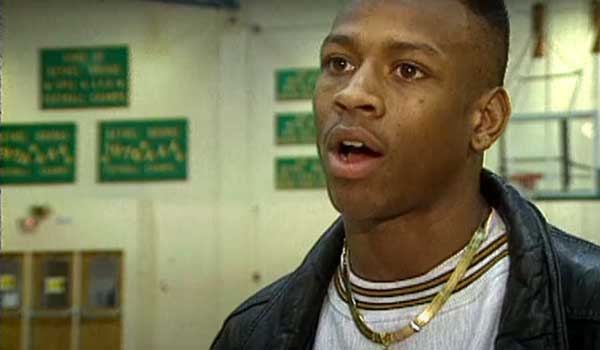
In a summer where the Kenner League seems a bit forgotten, this weekend marks one of its most memorable moments.
ADDITIONAL COVERAGE
On Thursday, August 4, 1994, Allen Iverson made his first appearance at Georgetown University, 17 months removed following a controversial trial which sentenced him to 15 years in prison following a disturbance at a Hampton, VA bowling alley. Following a clemency order from then Virginia Governor Douglas Wilder, Iverson set to complete his high school studies and visited Georgetown for the first time that weekend, having signed a letter of intent in April but not able to travel through his parole date of July 26."Iverson's debut was nothing short of historic for the Kenner League, which had been in action since 1982," writes a feature at the Georgetown Basketball History Project. "He stunned the Thursday night crowd of 700 with 30 points by halftime and 40 overall in a 75-67 win by Georgetown's summer team, named for and sponsored by The Tombs. The next evening, following a brief game recap in Friday's Washington Post, a crowd of 2,000 filled the gymnasium for the semifinal, where he scored 33 in a 106-90 semifinal win.
"The standing room only crowd was treated to a breathtaking offensive display," wrote the Washington Post the next day. "Iverson made 12 of 16 attempts and didn't miss until the 3:56 mark in the first half."
"His final points of the first half came via an inbounds alley-oop pass that was the highlight of the evening. He sneaked in from behind the three point line, began his leap from just inside the free-throw line and grasped the ball high above the rim before punctuating the play with a backboard shaking dunk."
"In a moment of either serendipity or skulduggery, a unnamed fan that evening had smuggled a video recorder into the game, which was strictly prohibited by Kenner and Georgetown officials. Posted to YouTube many years later, a two minute excerpt is a rare look at Iverson's first moments on the Hilltop:"
Iverson's conviction was overturned by the Virginia Court of Appeals in 1995.